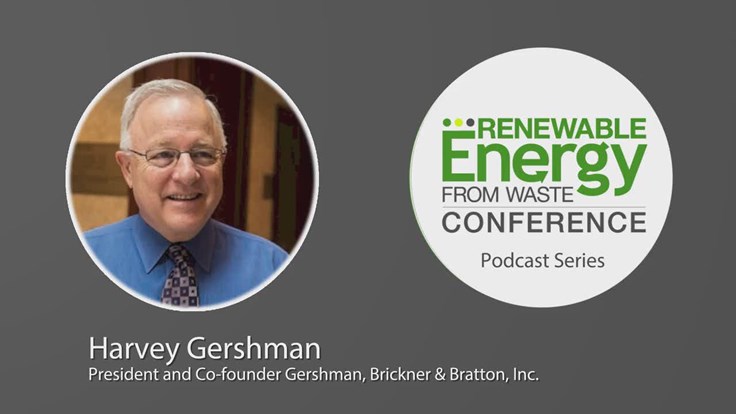The U.S. Environmental Protection Agency (EPA) announces its 16th annual Green Power Leadership Awards, recognizing 16 Green Power Partners across the country—including Apple, Cupertino, California; Cisco Systems, San Jose, California; Goldman Sachs, New York City; BNY Mellon, New York City; Jackson Family Wines, Santa Rosa, California; Kohl’s Menomonee Falls, Wisconsin; and the State University of New York (SUNY) Buffalo, Buffalo, New York –for achievements in advancing the nation’s renewable energy market and helping to reduce greenhouse gas emissions that contribute to climate change.
The award winners are being recognized for their efforts in expanding the domestic renewable energy market. From using enough green power to meet 100 percent of electricity needs to signing long-term contracts to enable new renewable energy projects, these organizations are demonstrating leadership by furthering the case for accessible, affordable green power use.
EPA defines green power as electricity that is generated from renewable sources, including solar, wind, geothermal, biogas and low-impact hydroelectric sources. Green power does not produce greenhouse gas emissions that contribute to climate change.
The 2016 Green Power Leadership Awards were presented Oct. 18 at the annual Renewable Energy Markets Conference in San Francisco. The winners for each of the five award categories are:
Excellence in Green Power Use Award: Biogen Inc., Cambridge, Massachusetts; BNY Mellon; Forest County Potawatomi Community, Crandon, Wisconsin; Goldman Sachs; Government of the District of Columbia, Washington, D.C.; Intel Corporation, Santa Clara, California; SC Johnson, Racine, Wisconsin.
Biogen Inc. procured all of its US electricity from renewable sources in 2015 and the previous year achieved carbon neutrality across its entire value chain. BNY Mellon met all of its annual electricity demand with green power in 2015 and became carbon neutral for its emissions that year. Forest County Potawatomi Community used 100 percent renewable energy in 2015 and installed a portfolio of solar photovoltaic systems at 15 tribal facilities. Goldman Sachs used green power for 100 percent of its US operations and achieved carbon neutrality in 2015 for its emissions. Government of the District of Columbia finalized a 20-year power purchase agreement (PPA) to provide renewable electricity from a wind farm in Pennsylvania and executed two solar PPAs on 50 District government sites.
Intel Corporation purchased 100 percent green power for its domestic operations and installed more than 60 on-site renewable energy projects to directly supply facility power needs. SC Johnson procured 44 percent of its US electricity from renewable sources and owns and operates its own landfill gas system and wind turbines, which generated 16 and 7.6 million kilowatt-hours of electricity, respectively, in 2015.
Green Power Partner of the Year Award: Cisco Systems; Jackson Family Wines; University at Buffalo, the State University of New York
Cisco Systems more than doubled its green power use in 2015, representing 97 percent of its total US consumption and encouraged its vendors, business partners and supply chain to reduce emissions. Jackson Family Wines purchased 100 percent green power for the company’s annual electricity use and increased green power use to 35 percent for winemaking operations by installing on-site solar across nine wineries. University at Buffalo (UB), the State University of New York procured more than 212 million kilowatt-hours of wind-sourced renewable energy and on-site solar installations on its campus.
Sustained Excellence in Green Power Award: Apple Inc.; Kohl’s Department Stores
Apple used 100 percent renewable energy for its entire US operations. Apple’s renewable energy generation projects include solar PV in North Carolina, Nevada and Arizona, micro-hydro facilities in Oregon and industry-leading partnerships with utilities and providers of grid-purchased green power. Kohl’s Department Stores procured 1.4 billion kilowatt-hours of green power in 2015 through more than 60 long-term solar PPAs, Kohl’s-owned solar systems that generate green power on-site, and by purchasing renewable energy certificates. Kohl’s also installed three new solar trees at its Innovation Center and achieved net-zero emissions for its Scope 2 electricity use through 2015.
Direct Project Engagement Award: General Motors/GM Orion Assembly Plant, Lake Orion, Michigan; Google Inc., Mountain View, California; Harbec Inc., Ontario, New York.
General Motors/GM Orion Assembly Plant generated more than half of the facility’s total electricity usage from its on-site landfill gas system. Gas that would have been flared at a nearby landfill is now redirected and piped to the facility to create electricity for building vehicles, notably the Chevrolet Bolt EV. Google Inc. signed 15 long-term PPAs with wind and solar projects totaling more than 2,000 megawatts of installed capacity and pilots renewable energy technologies on its campuses. Harbec integrated on-site wind generation with a combined heat and power plant into a microgrid that uses renewable energy; the company’s two wind turbines provide approximately 60 percent of the company’s electrical power.
Green Power Community of the Year Award: Maplewood Community, Missouri
Maplewood Community, Missouri’s support of green power increased by more than 300 percent, resulting in more than five percent of the community-wide total electricity use last year.
From installing green power on-site to innovative purchasing, these award winners are helping lead the way in advancing the green power market. The awardees were selected based on a multitude of criteria, including the size and scale of their green power use, leadership and innovation in purchasing and generating green power, internal and external communications efforts, as well as organizational strategy for investing in green power.
A full list of 2016 Green Power Leadership Award winners can be found here.



